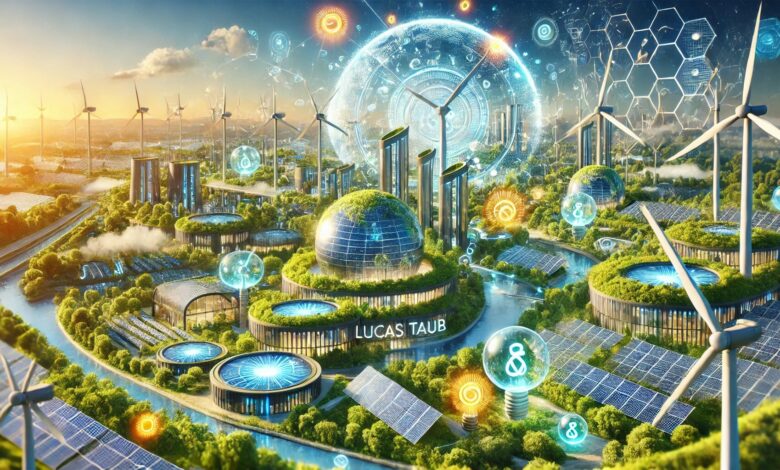Lucas Taub Ecosystem Energy: Revolutionizing Sustainable Power Solutions

In the ever-evolving energy sector, sustainable practices are essential for maintaining a balance between technological progress and environmental conservation. The Lucas Taub Ecosystem Energy is emerging as a groundbreaking concept to redefine how energy is produced, distributed, and consumed.
Understanding the Lucas Taub Ecosystem Energy Model
Lucas Taub Ecosystem Energy integrates renewable energy sources, efficient energy management systems, and eco-friendly technologies. This approach aims to minimize carbon footprints and promote sustainability.
Key Components of the Ecosystem
- Renewable Energy Sources: Solar, wind, and geothermal energy.
- Energy Storage Systems: Advanced battery technologies for efficient energy storage.
- Smart Grids: Real-time energy distribution to optimize usage.
The Need for Sustainable Energy Ecosystems
The global reliance on fossil fuels is driving climate change and resource depletion. Implementing a sustainable energy ecosystem can:
- Reduce Environmental Impact: Shift towards renewable energy minimizes pollution.
- Enhance Energy Security: Diverse energy sources reduce dependence on non-renewable fuels.
- Promote Economic Growth: Investment in clean energy generates jobs and innovations.
Technological Innovations in the Lucas Taub Energy Model
1. Solar Power Integration
Lucas Taub Ecosystem Energy focuses on high-efficiency photovoltaic cells. These cells maximize sunlight absorption and convert it into electricity with minimal loss.
2. Wind Energy Advancements
The ecosystem incorporates cutting-edge wind turbines that adapt to varying wind speeds, ensuring optimal energy production even in less favorable conditions.
3. Smart Energy Management
Artificial intelligence is employed to monitor and adjust energy consumption patterns. This smart management reduces waste and enhances overall system efficiency.
4. Green Hydrogen Production
Hydrogen derived from renewable sources is used as a clean fuel alternative, further diversifying the energy portfolio.
Benefits of Lucas Taub Ecosystem Energy
Environmental Benefits
- Reduced greenhouse gas emissions.
- Improved air and water quality.
Economic Advantages
- Lower energy costs over time.
- Increased employment opportunities in green technologies.
Social Impact
- Enhanced energy access for remote and underprivileged regions.
- Support for community-based energy initiatives.
Overcoming Challenges in Implementing Sustainable Ecosystems
1. High Initial Investment
Transitioning to sustainable energy systems requires substantial capital. However, long-term savings and environmental benefits justify the costs.
2. Technological Barriers
Developing countries face challenges in adopting advanced technologies due to lack of infrastructure. Collaboration between nations and organizations can mitigate this issue.
3. Policy and Regulation
Supportive policies and incentives are crucial for encouraging industries to adopt sustainable practices.
Future Prospects of Lucas Taub Ecosystem Energy
As technological advancements continue, the Lucas Taub Ecosystem Energy model is poised to:
- Lead the global transition to renewable energy.
- Inspire innovations in energy efficiency and storage.
- Foster international cooperation for sustainable energy solutions.
Conclusion
The Lucas Taub Ecosystem Energy represents a pivotal step towards a greener, more sustainable future. By embracing renewable resources, intelligent energy management, and collaborative efforts, this model has the potential to transform the energy landscape globally. Implementing such an ecosystem not only addresses current environmental challenges but also lays the foundation for a resilient energy future.



